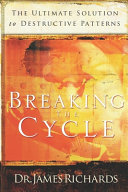

The book begins by delving into the concept of cycles in various aspects of life and business. It emphasizes that cycles are not just patterns of behavior but are deeply embedded in the fabric of our decision-making processes. The author illustrates how recognizing these cycles can lead to better strategic planning and decision-making. By mapping out the cyclical nature of challenges and opportunities, individuals and organizations can anticipate changes and adapt proactively. The idea is to foster a mindset that sees beyond immediate outcomes and considers the long-term implications of actions taken today. The author provides examples from history, business, and personal experiences to highlight the importance of understanding these cycles.
Continue readingOne of the core themes of the book is the identification and breaking of negative patterns that hinder progress. The author discusses how individuals and organizations often fall into traps of repetitive behavior that lead to stagnation. By analyzing past failures and recognizing the signs of these negative cycles, readers are encouraged to take actionable steps to break free. The book outlines practical strategies for changing mindsets and behaviors, including the importance of self-reflection, feedback loops, and accountability. The author shares stories of successful individuals and organizations that have managed to break their cycles and achieve remarkable results.
Continue readingInnovation is presented as a critical factor in breaking cycles. The author argues that without innovation, organizations risk becoming obsolete. The book explores various forms of innovation, from product development to process improvements, and emphasizes the need for a culture that fosters creativity and experimentation. Readers are encouraged to embrace failure as a part of the innovation process, viewing it not as a setback but as a stepping stone towards success. The author provides case studies of companies that have successfully innovated and adapted to changing market conditions, illustrating the tangible benefits of a forward-thinking approach.
Continue readingThe book highlights the significance of emotional intelligence in leadership roles. The author asserts that leaders who possess high emotional intelligence are better equipped to recognize and navigate cycles within their teams and organizations. This involves understanding the emotional dynamics at play and fostering an environment where open communication and trust are prioritized. The author provides tools and techniques for developing emotional intelligence, such as active listening, empathy, and conflict resolution skills. By cultivating these attributes, leaders can inspire their teams to break free from unproductive cycles and work towards a shared vision.
Continue readingResilience is a recurring theme throughout the book, with the author emphasizing its importance in overcoming challenges and breaking cycles. The book outlines strategies for building resilience at both personal and organizational levels. This includes developing a growth mindset, maintaining a supportive network, and practicing self-care. The author argues that resilience allows individuals and organizations to bounce back from setbacks and view challenges as opportunities for growth. Real-life examples of resilient individuals and organizations are shared to illustrate how resilience can lead to sustainable success.
Continue readingStrategic planning is framed as essential for breaking cycles and achieving long-term success. The author discusses the importance of setting clear, achievable goals and creating a vision that aligns with these goals. The book provides a framework for effective strategic planning, including the need for regular assessments and adjustments to plans as circumstances change. The author emphasizes that a well-defined vision helps individuals and organizations stay focused and motivated, even in the face of challenges. Readers are encouraged to engage in collaborative planning processes that involve diverse perspectives, ensuring that all voices are heard.
Continue readingThe final key idea revolves around the power of community and collaboration in breaking cycles. The author posits that no one achieves success in isolation and that leveraging networks and partnerships can amplify efforts to break negative cycles. The book discusses the importance of building relationships, sharing resources, and collaborating towards common goals. Readers are encouraged to seek out mentors, join communities of practice, and engage in collaborative projects that foster innovation and resilience. The author shares examples of successful collaborations that have led to transformative change, reinforcing the idea that collective efforts can lead to greater outcomes.
Continue reading